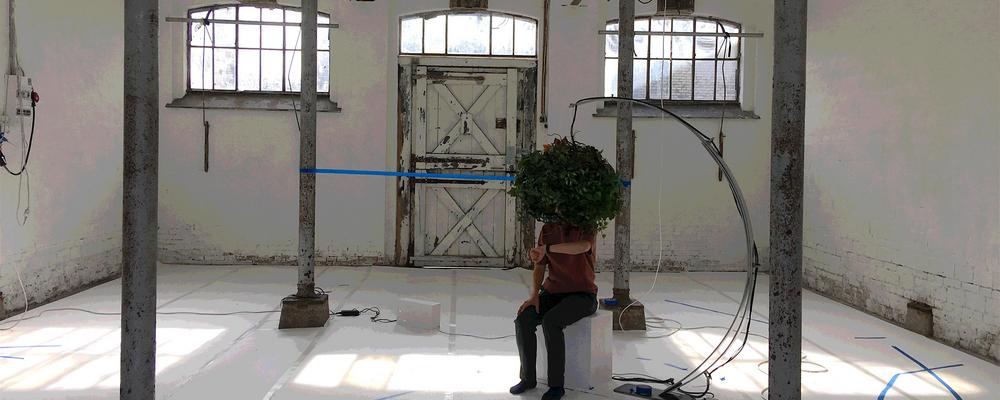Registration is now open! Please find all the events - key-note lectures, working groups, panel discussion and live streaming performance and the on-line registration at the website eventbrite.co.uk.
This two-day on-line symposium aims to explore how performance and curatorial practices operate as sites of research. The symposium will do this from two distinct strands: From the field of performance practices, it looks at how the processes of documenting and archiving a performance can operate as both artistic practice and site of embodied research. From the field of exhibition making and the curatorial it explores what is specific to the exhibition form that might allow it to be part - rather than the outcome - of a research process.
The symposium will be in English.
Confirmed contributors
- Adrian Heathfield och Irit Rogoff (key-notes)
- Anthony Gardner
- Bojana Piksur
- Charlotta Ruth and Peter Mils
- Elli Pappakonstantinou
- Gunter Lösel
- Ivani Santana
- Julian Klein
- Kristine Khouri and Rasha Salti
- Natasa Petresisin-Bachlez
- Yolande van der Heide
‘Performance as research’ (PAR) and the relatively new ‘embodied research’ have become accepted approaches for producing forms of situated knowledge. Through these approaches, not only a number of artistic research projects have come into being, but also a debate around the boundaries between performing and mediating, performing and recording and performing arts and its documents. Like this, claims such as that ‘performance becomes only through its disappearance’ (1993, Peggy Phelan), that ‘live performance is always part of a system of reproduction and mediatized cultures’ (1999, Philip Auslander) or ‘that performance is not its own document, it is, constitutively, that which does not remain’ (2011, Rebecca Schneider) remain canonical references of a history of performance documentation.
Nevertheless, the documentation of live performance as forms of embodied co-presence, auratic space and communal experience continue to be compromised by the procedures and technologies of documentation. If performance documentation could move beyond these assumptions (or limitations), what forms of documents or archives would emerge and how could they be transmitted as and within research practices? And how might we create other forms of restaging, retelling or reenacting such documents and its historiographies?
This strand of the symposium will combine a keynote lecture and two zoom workshops/seminars, focusing specifically on the notion of performing archives as well as on new ways of documenting and/or notating body-based performances. Additionally, the performance artists Charlotta Ruth and Peter Mils will present parts of the on-going Living Documents project in which documentation tools and memory are enacted as ‘performance loops’ and forms of liveness.
Strand 2: The exhibition as a site of research
Since the 1990s ‘research exhibitions’ have emerged as a specific approach to the exhibition. Often carried out by teams of researchers and drawing from different disciplines they have sought to break positivist approaches to narrating (art) histories. This shift to a more speculative, interdisciplinary form of research practice can be seen as a means to de-center (art) histories away from colonial, patriarchal, capitalist narratives and epistemologies.
Discourse around the curatorial (developed largely through participants of the Curatorial Knowledge program at Goldsmiths) has explored the forms of knowledge produced through curatorial work as distinct from the practical tasks of exhibition making. Curator Anselm Franke has introduced the notion of the ‘essay exhibition’, extending the relationship between the exhibition and research. Recently, curator Bonaventure Soh Bejen Ndikung has called for ‘exhibition-making as an act of assembly of notions, peoples and histories’.
How might looking closely at recent examples reveal the different strategies through which research is framed, staged and activated through the exhibition? Does working with feminist, queer or decolonial histories and epistemologies allow the exhibition to move from positivist, theological announcements to functioning as a more provisional site of inquiry? Or are the formats of exhibiting and representing themselves too closely tied to institutional, imperial forms of knowledge?
This strand of the symposium will combine a broadcasted keynote lecture and two zoom seminars, focusing specifically on recent exhibition histories and case studies.
Concluding sessioin: in the Wake of Covid 19
The symposium will conclude with a session critically reflecting on the way in which performance and exhibition has - in different ways - operated online in the wake of Covid-19 and the widespread closure of exhibition spaces and theatres. Turning to specific examples and through the form of a panel discussion with invited speakers, the session will look at the ways in which current exhibitions and performances are developed and mediated (either live or through records of past events) and what they tell us about the specificity and nature of these respective forms?
Equally, what role does documentation and the archive play in face of a growing concern towards the preservation, representation and dissemination of these respective forms on the internet? And finally, how can these new digital formats in turn, help us to reflect upon forms of documentation and live experience?
The symposium is in English, it is arranged by the PhD students Nathalie S. Fari and Nick Aikens.
